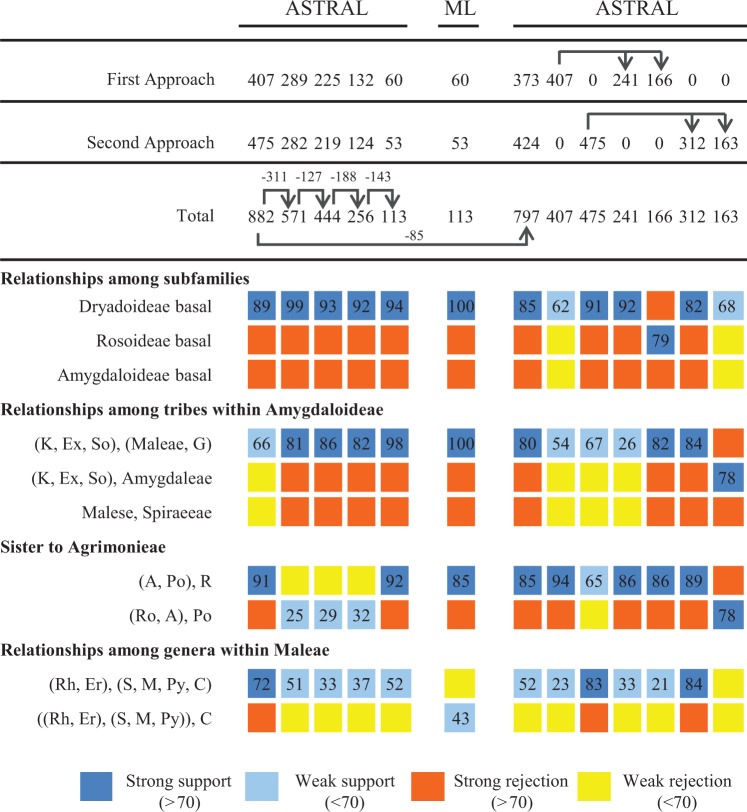Fig. 3.
A summary of alternative topologies in results from 12 coalescence analyses and one concatenation analysis. At the top are phylogenetic methods and numbers of genes in various sets and relationships between gene sets (see “Results” and “Materials and Methods” sections, and supplementary fig. S24, Supplementary Material online for additional information). The column on the left indicates possible topologies. Designations: Dryadoideae basal: Dryadoideae at the basal position, as sister to the combined clade of Amygdaloideae and Rosoideae, others similarly. K: Kerrieae. Ex: Exochordeae. So: Sorbarieae. G: Gillenieae. A: Agrimonieae. Po: Potentilleae. Ro: Roseae. Rh: Rhaphiolepis. Er: Eriobotrya. S: a combined clade of Sorbus alnifolia, Sorbus aria, Sorbus torminalis, Sorbus commixta, and Sorbus aucuparia. M: a clade including Malus baccata and its three nearest relatives (as shown in fig. 1). Py: Pyrus. C: Cydonia and its five nearest relatives (as in fig. 1). Number in each square refers to values in support of a particular topology indicated in the left column. Strong support refers to support values of at least 70%. Weak support refers to values less than 70%. If there is a strong support for a topology in a particular node, other topologies at this node are strongly rejected. If there is a weak support for a topology in a particular node, other topologies at this node are weakly rejected.

